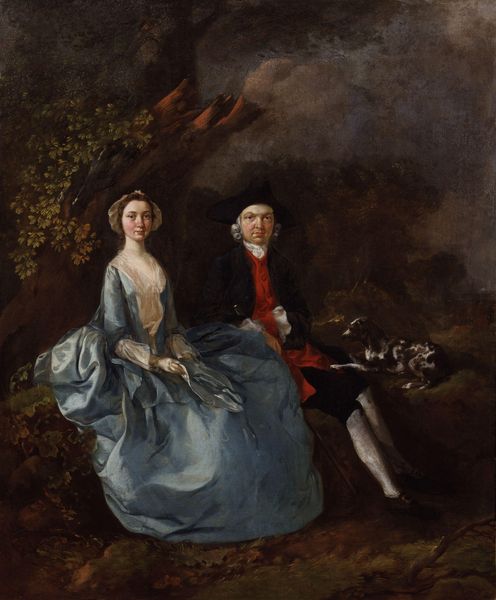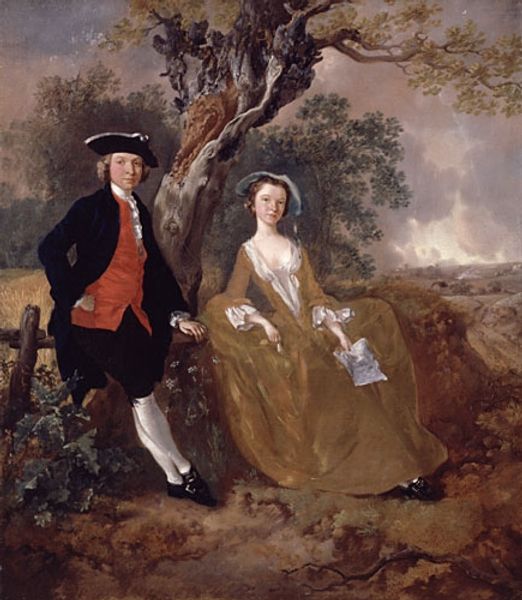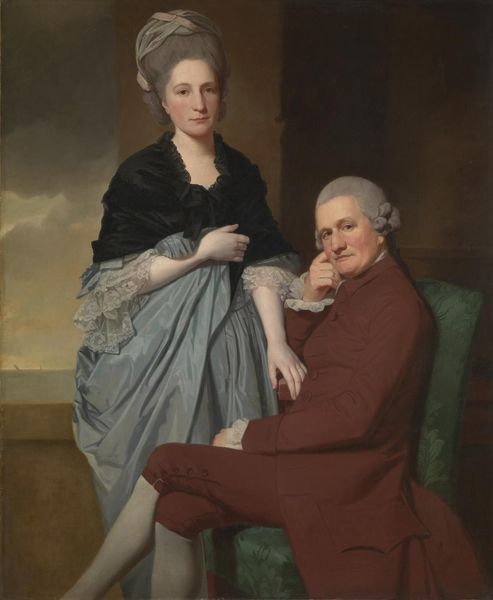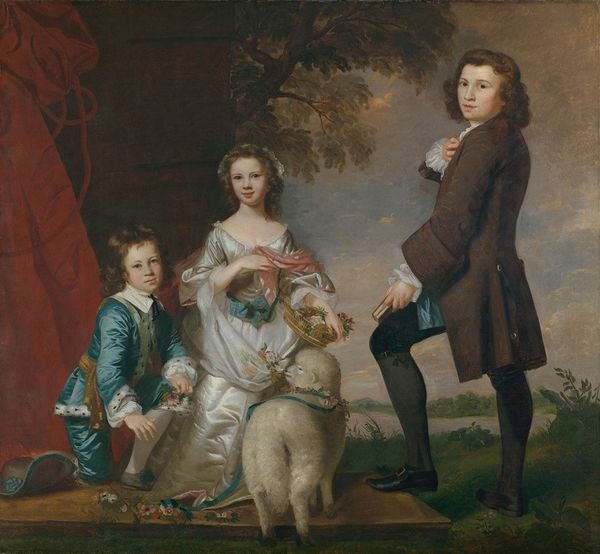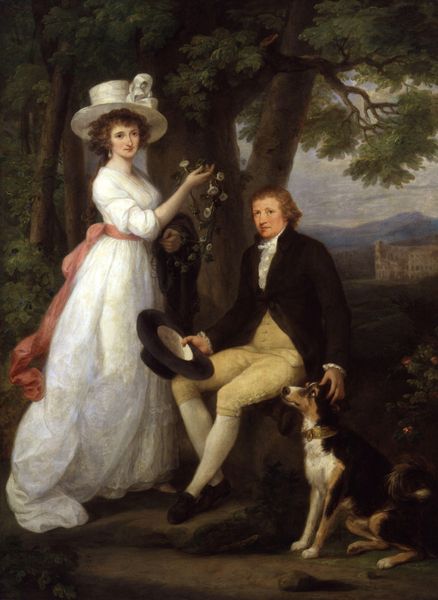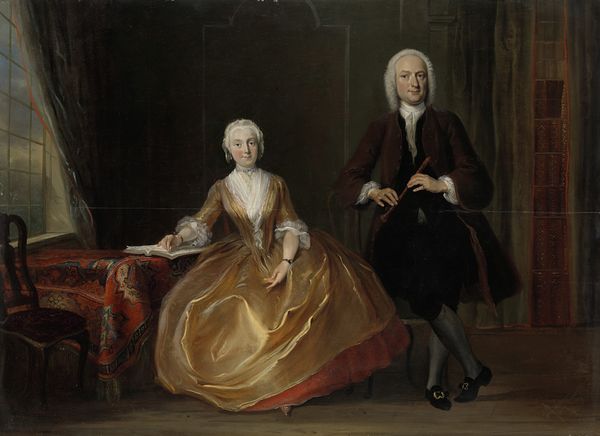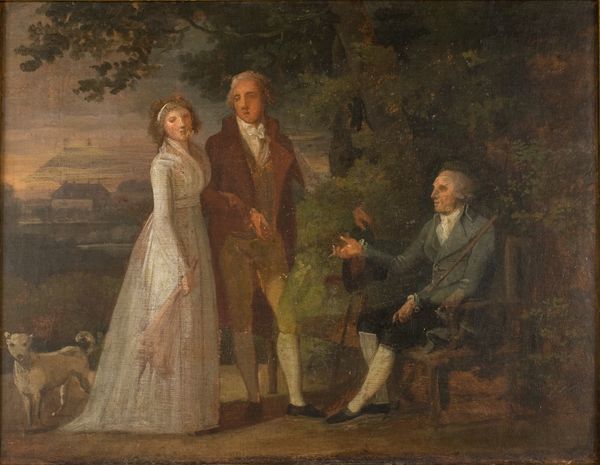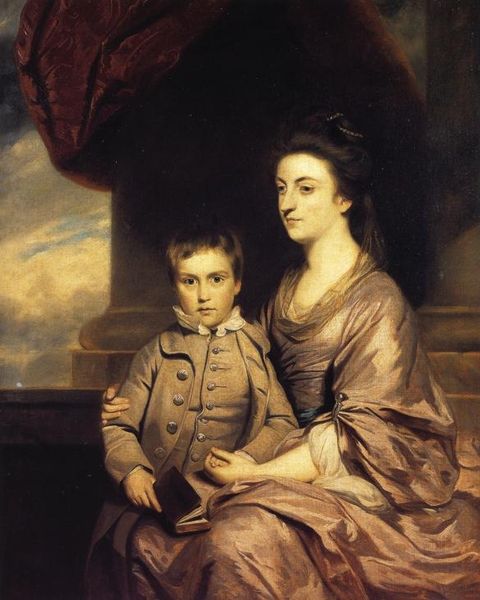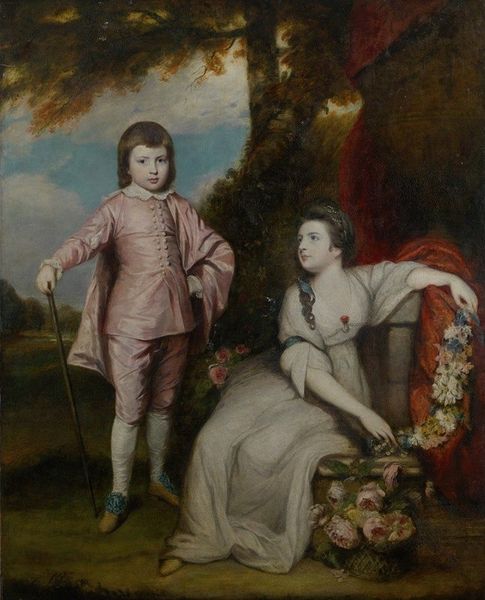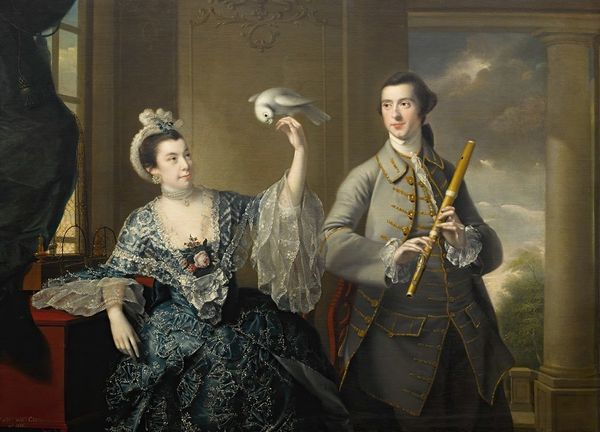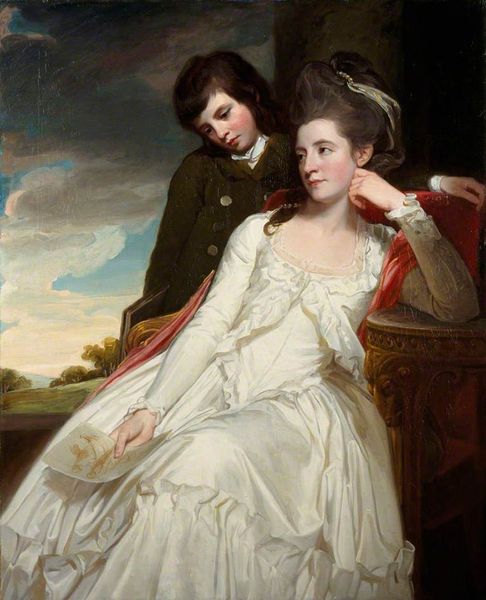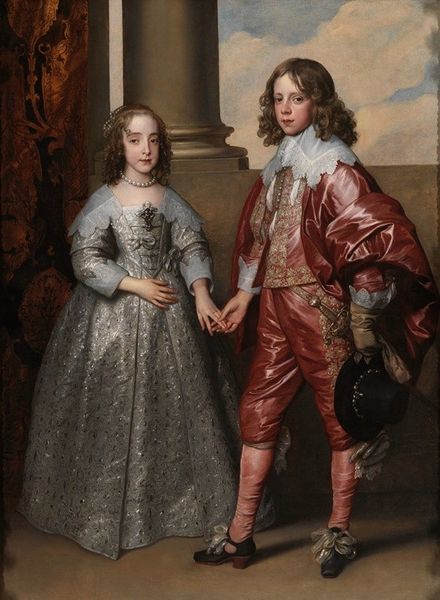
Dimensions: support: 2381 x 1816 mm
Copyright: CC-BY-NC-ND 4.0 DEED, Photo: Tate
Editor: Here we have Sir Joshua Reynolds' "Sir Watkin Williams-Wynn and his Mother," currently residing at the Tate. It's a large canvas, and I'm struck by the way the subjects are presented in this somewhat artificial landscape. What's your take on it? Curator: Reynolds was masterful at crafting images of power and social standing. Look at the scale, the costumes, and the carefully constructed backdrop. He's not just painting a portrait, he's staging a performance of aristocratic identity. How does this compare to portraits of common people from the same period? Editor: I see what you mean! This isn’t just representation; it’s a carefully constructed narrative about wealth and status. I didn’t catch that at first glance. Curator: Precisely. And understanding that helps us decode the visual language of 18th-century British society.
Comments
tate 8 months ago
⋮
http://www.tate.org.uk/art/artworks/reynolds-sir-watkin-williams-wynn-and-his-mother-n05750
Join the conversation
Join millions of artists and users on Artera today and experience the ultimate creative platform.
tate 8 months ago
⋮
Sir Watkin Williams-Wynn was a hugely wealthy Welsh landowner, and a member of the ‘Honourable and Loyal Society of Ancient Britons’. Reynolds shows him with his mother. In the background is the Welsh fortress of Dinas Bran, associated with the Welsh kingdom before the English conquest in the thirteenth century. Williams-Wynn commissioned two paintings of the same view from the landscape painter Richard Wilson. Sir Watkin was proud of his descent from the ancient British and Welsh kings, but he was also a sophisticated London gentleman with a grand house in the West End designed by the architect Robert Adam. Gallery label, September 2004

